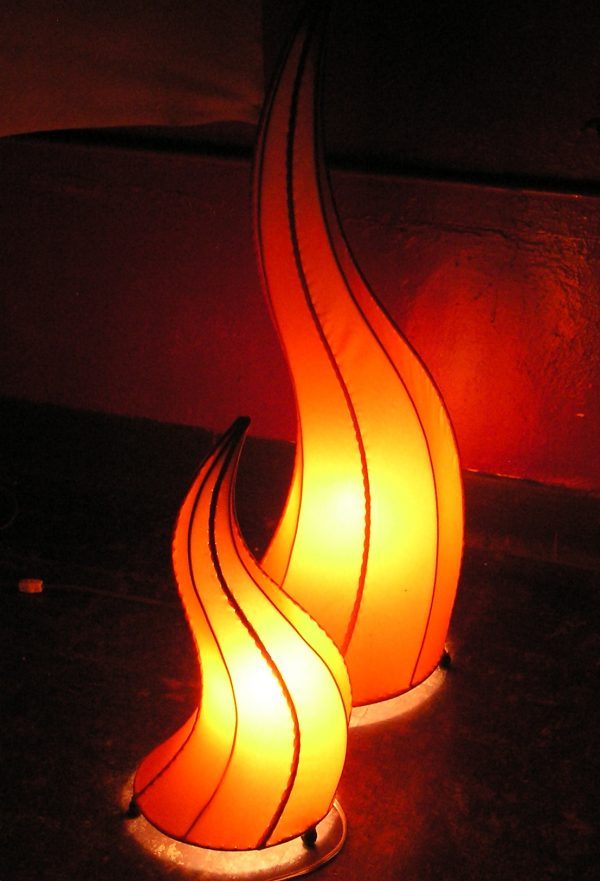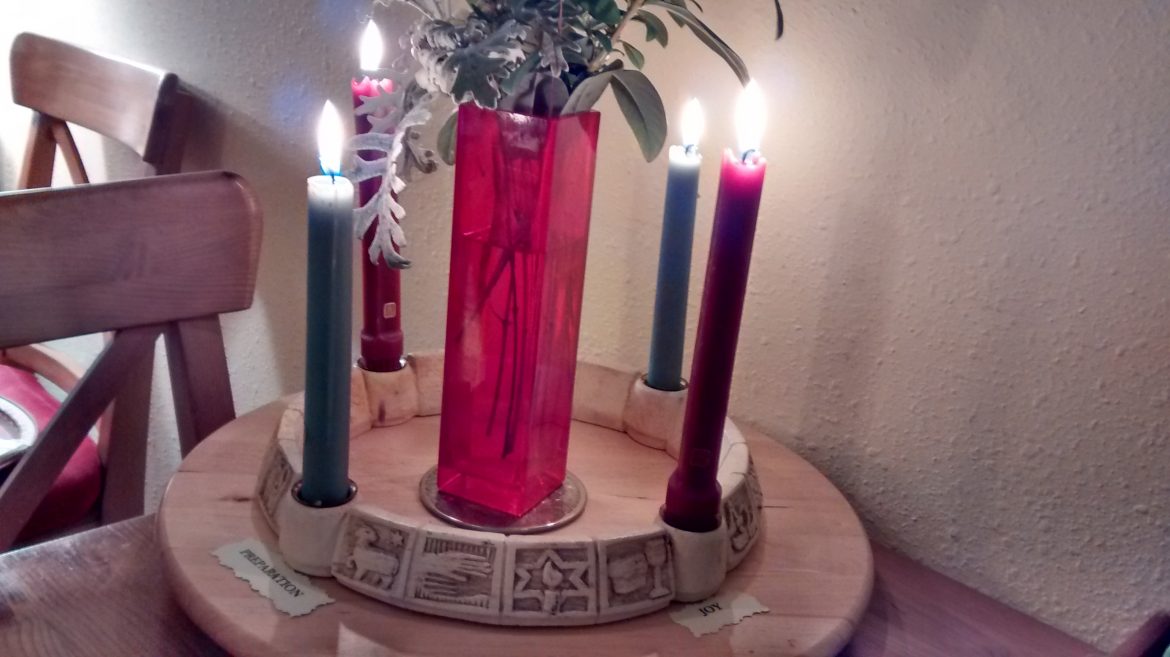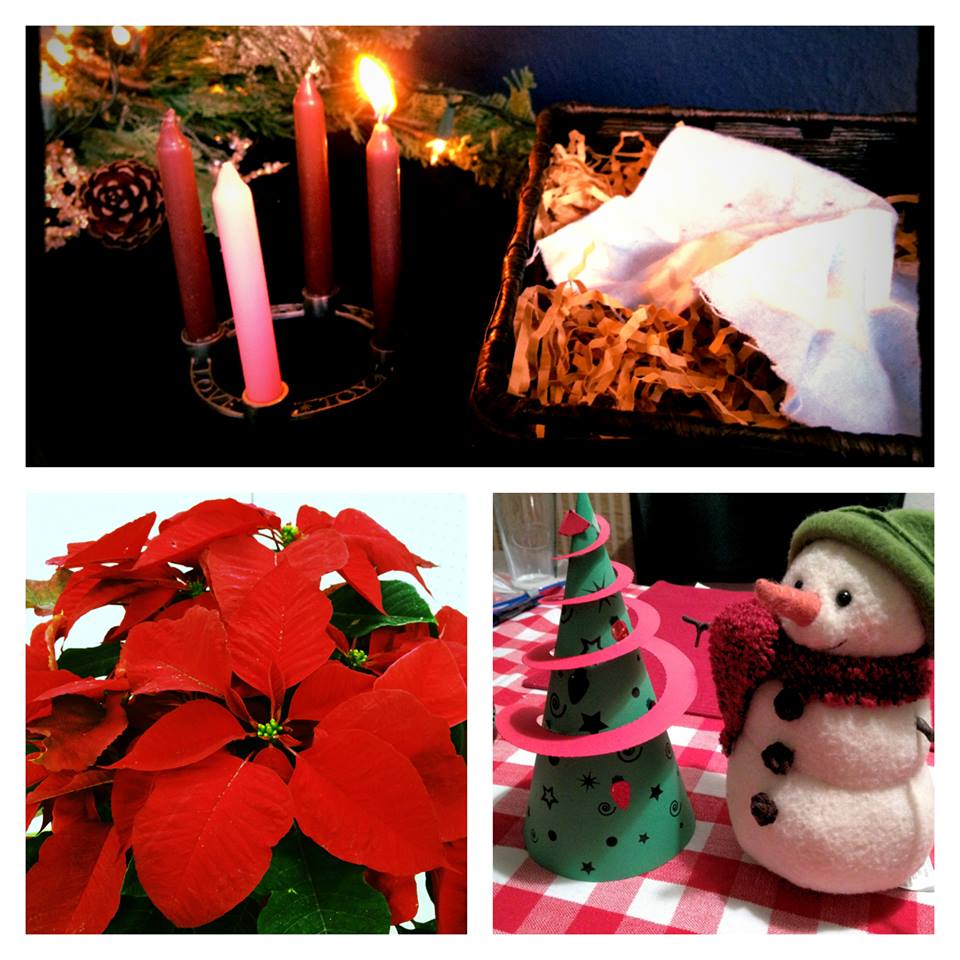by James Amadon
The news hangs from my shoulders these days like a heavy backpack, each story another stone to carry. I am tired of paying attention but afraid to stop, and it is taking a toll. My wife, Emily, says she can tell I am carrying the weight of the world when my shoulders start to slump forward. It is hard to stand up straight when each day brings new revelations of the terrible things that happen when selfishness and fear is wedded to power. Even now, as I write this in my local coffee shop, a young, white man with a shaved head is loudly pontificating to his companion about genetics and Martin Luther King Jr. I cannot tell for sure if he is part of the increasingly vocal ethno-nationalist movement in our nation, but it is a sad sign that this is my first guess.
One of the significant victims of our current cultural moment is joy, the deep sense that, come what may, the heart of the world contains an unshakeable goodness. This is what Jews and Christians hear in the opening poetry of Genesis, when God declares again and again and again, “It is good” (Gen. 1). Joy is rooted in memory and sustained by hope; neither comes as naturally to me as I would like. I take it as a great grace that, despite my inclination to forget the past and focus on all that is currently wrong with the world, hope wedges into my days like seeds in a cracked sidewalk, unexpectedly shooting up and blessing me with life-giving joy. This was true the other day as I watched the literal sidewalk in my neighborhood shimmer in the post-rain sunshine underneath a vibrant sky awash in greys and blues. It was a moment that transcended the moment, and it filled me with enough joy to lift my shoulders, shed my burdens, and open my eyes to something deeper.
 Joy also came unexpectedly a few months ago when I was given the opportunity to become the Executive Director of Mustard Seed Associates, the non-profit from which Godspace was birthed. I am filled with hope as I help shape Circlewood, the name we have given to the new ministry focus of MSA. We will be working with Christ-followers, the Church as a whole, and any other friends who want to join in, to put care for creation at the center of who we are and what we do. To me, this is an absolute necessity if we are going to be faithful to Scripture and more aligned with God’s heart for the whole world. It is also, I believe, a gateway to joy, being rooted in the hope that all of creation is woven into God’s redemptive love and grace.
Joy also came unexpectedly a few months ago when I was given the opportunity to become the Executive Director of Mustard Seed Associates, the non-profit from which Godspace was birthed. I am filled with hope as I help shape Circlewood, the name we have given to the new ministry focus of MSA. We will be working with Christ-followers, the Church as a whole, and any other friends who want to join in, to put care for creation at the center of who we are and what we do. To me, this is an absolute necessity if we are going to be faithful to Scripture and more aligned with God’s heart for the whole world. It is also, I believe, a gateway to joy, being rooted in the hope that all of creation is woven into God’s redemptive love and grace.
It is this hope that keeps me from allowing the news of the day to overshadow the good news of Jesus. This good news burst into the world two millennia ago, dazzling lowly shepherds in the Palestinian countryside with a message that reaches through time to speak the truth we need to hear this Advent: “Do not be afraid. I bring you good news that will cause great joy for all the people” (Luke 2:10).
Great joy such as this often only comes after great sorrow, and those who follow Jesus know that the child in the manger becomes the outlaw on the cross, shoulders slumped in death from carrying the weight of the world. But Jesus, “who for the sake of the joy that was set before him endured the Cross” (Heb. 12:2), was buried like a seed in the cracked earth and burst forth as a sign of God’s new creation.
It is tempting this Advent to see only leafless trees, falling sunlight, and a darkening cultural horizon. But this is God’s pattern: death to life, bad news to good, sorrow to joy. Lift up your shoulders, shed your burdens, and open your eyes; joy springs up in unlikely places.
 James Amadon is the new executive director of Mustard Seed Associates. He comes after serving for 10 years as the Senior Pastor of Highland Covenant Church in Bellevue, WA. In addition to his leadership skills and experience, he brings a passion for helping people see the personal, social, and ecological dimensions of faith and developing ways to integrate these dimensions into an integrated whole, an area he is also working on in his doctoral studies at Duke Divinity School. Feel free to reach out to James at jamadon316@gmail.com.
James Amadon is the new executive director of Mustard Seed Associates. He comes after serving for 10 years as the Senior Pastor of Highland Covenant Church in Bellevue, WA. In addition to his leadership skills and experience, he brings a passion for helping people see the personal, social, and ecological dimensions of faith and developing ways to integrate these dimensions into an integrated whole, an area he is also working on in his doctoral studies at Duke Divinity School. Feel free to reach out to James at jamadon316@gmail.com.
Here is an amazing post about sharing joy through bringing justice, hope and freedom to people around us. Greg has done incredible work in Fair Trade Gold one of the places in which there has been brokenness and where we can celebrate glimpses of God’s healing and wholeness during this Advent season. What he has accomplished is fantastic. This post is by Greg Valerio.
Yes, folks its true – prayers really do get answered. I unashamedly attribute the success in securing Fairtrade Gold Uganda to prayer. Not the prayers of an overly infantile Sunday school narrative, or the prayers of hands together eyes closed, the meek and mild deference of ‘you in your small corner and I in mine’.
I am speaking about the true prayer of faith, belief, courage, vision, fortitude, patience and resilience. The prayers of men and women who in their poverty, their exploitation, their weakness and the marginalisation of the post colonial African economic settlement, cried out for help, recognising that on their own they will not overcome the immensity of the unjust scales that are weighted against them.
The prayers that overcome a history, rooted in the darkest aspects of human horror, genocide, slavery, intentional cultural obliteration and the destruction of the human soul. Prayers that overcome the intentional endeavour of an economic system that seeks to forward the greed and avarice of luxury elites and militaristic empires. The nature of false power is to control, and slavery is the ultimate expression of a perverted human spirit.
Jesus of Nazareth talked about prayer as a mustard seed that grows into a mighty tree and yeast in the dough that causes the whole loaf to rise. Prayer is the active ingredient that generates hope, growth and ultimately gives life. The securing of certified Fairtrade Gold Uganda is an answer to a prayer that was breathed out in a simple conversation in 2004 in the rainforests of the Chocó Region of Colombia.
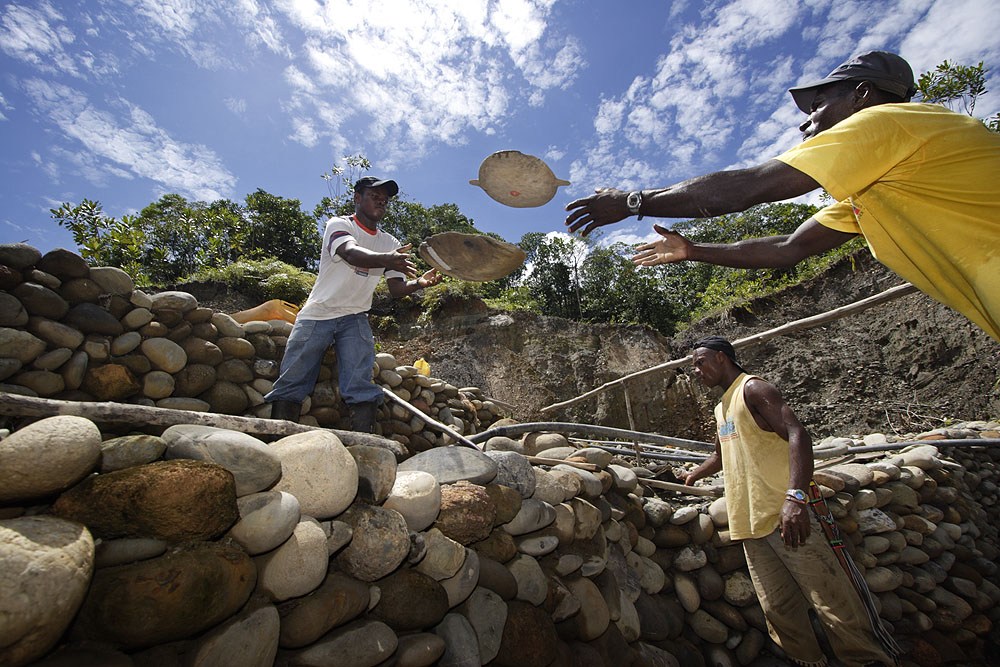
From Greg Valerio
As I stood in the rivers of this lush rainforest with my friends at Oró Verde, Aristarco and Ameriko told me their Afro-Colombian story. Generations of slavery, forced labour in gold mining, the fight to regain their cultural identity in the face of Colombian racial discrimination. The destruction of their rainforests by illegal gold miners and large scale corporate mining companies. The systemic polluting of their rivers with toxic mercury and rampant deforestation and soil erosion. They dreamed, nay prayed, for a sensitive, ecologically reverent, culturally appropriate way to extract gold and for an economic justice that would mean the money they earned stayed in their communities and put their children through school. This was the prayer of their voices, their sweat, their lived out daily lives. I recall, as if it was yesterday, Ameriko saying;
‘Do you think the way we are gold mining will ever travel back to Africa and bless the land we first came from?’
Let me be clear – this is a prayer, a simple, clear, innocent, pure prayer from the heart of man whose love and intention demanded a response not just from me, but from the very Creator from whom we all proceed. God hears our prayers, but not necessarily the way we would choose to see them answered. The gold I purchased on that trip became the small seed from which the tree of Fairtrade Gold would grow. This was a prayer of redemption.

One of the Fairtrade Gold miners emerges from the timbered mine shaft at SAMA in Busia district Uganda.
Today in November 2017 I stand on the red earth of Africa, in Busia District of Uganda, watching as a man emerges from a timbered shaft that has recently been dug some 70 feet into the earth. He emerges covered in the earth mud of the land from which he belongs. The gold that he and the Syanyonja Miners Alliance (SAMA) are mining, is certified Fairtrade Gold. This is the first indepentantly certified gold from Africa and represents an African first. A gold that in every way is an answer to the prayers of Ameriko and his Afro-Colombian community.
On its journey, this prayer has touched marginalised communities in Bolivia, Peru, Argentina and Ecuador. In Africa it has taken root in Tanzania, Kenya and Uganda. It has inspired a Peace Gold response in the war torn eastern Democratic Republic of Congo (Part 1 – Part 2 – Part 3). It’s catalysed hundreds of progressive ethical jewellers large and small across all the continents of the world and redefined the narrative of an entire industry (beware green washing in the jewellery profession masquerading behind the word ethical). Designers have travelled to holes in the ground, reporters have reported on the challenges of child labour, gender exploitation and unfair terms of trade in gold, politicians have avoided and embraced and countless friends and enemies have been made. Arguments have been had, fights have been fought, NGO’s have clashed and coalesced, corporations have ignored, patronised, applauded and sought to co-opt. Fairtrade Gold has often been immersed in politically correct processes, ideological development theory, political structures and sought to be owned as an intellectual property right, and overcharged by mining consultants. It has inspired students, campaigners, activists, creatives to fashion and forge a better way in this most exploited of professions. As well as called out prejudices, racism and bigotry in those who have been so ardently wedded to the jewellery professions mantra of ‘No change at any cost’.
Fairtrade Gold sits atop Cathedral spires and hangs on the necks of award winners. In every way this simple prayer of redemption has called out the goodness, the greatness and the darkness that is present in us all and in the human structures we naively place our fragile faith in.
The power of a product like Fairtrade Gold Uganda rests not in its financial value, or in its inherent beauty. Nor does it rest in the designs of those who use it, or in the standard that verifies its honesty and integrity. The true power of Fairtrade Gold resides in its story. The best gold story in the world began as a prayer and took a life of its own that no-one, including myself (who was the first jeweller to conceive of the idea), owns the story. This is the power of prayer. It originates in the Creator, it flows from the creator, we are privileged to participate in the life it gives and it will ultimately return to the earth from which it emerged. No one owns it.
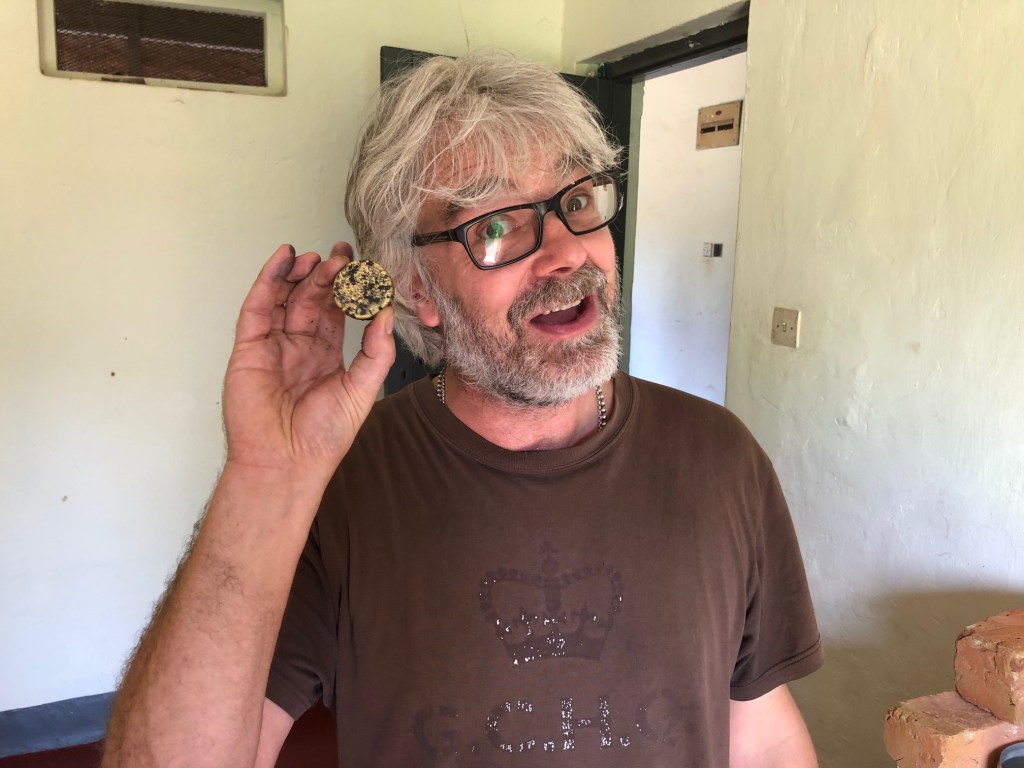
The first commercial smelted Fairtrade Gold Uganda button. It’s a beautiful thing.
So I come to the completion of a thirteen year journey¹ with Fairtrade Gold, what began in a hole in the ground in Colombia has led me to a hole in the ground in Uganda. As I look forward I am beginning to see a the bigger picture.
- A picture that transcends the secular liberal vocabulary of political correctness, process and structure.
- A picture that embraces a simple life affirming narrative of hope, fulfilment and redemption.
- A picture that embraces diversity within a unity of purpose, namely God’s justice for the poor.
This has been a global pilgrimage worth taking and one I will continue to walk, no longer as a jeweller, but as an advocate of peace, justice, reconciliation and redemption.
As I have said on many occasions before – please buy Fairtrade Gold, it is the best gold story in the world.
¹ The first commercial export of Fairtrade Gold Uganda Africa by CRED Trading Company aka CRED Jewellery represents a natural synchronisity with its first commercial export of Oró Verde gold from Colombia. The purchase that started the whole Fairtrade Gold story.
Photo Credits: Ronald de Hommel, Chichester Observer, Greg Valerio
by Christine Sine
Advent, at least in the Western church, officially started yesterday. This challenging season when we await the coming of the promised son of God is upon us, but some of us are confused as to what it means. Is it a time to get all our Christmas shopping done? Or should we be decorating our homes and making Christmas cookies? Or is it a time to plan our Christmas parties?
Advent is meant to remind us of why Christ came, of what is broken in me and my world and why God needed to intervene to bring wholeness. This is a time for deep and serious reflection on how we live our lives and commit ourselves to the purposes of God.
Advent Reminds Us That The Work Of Salvation is Ongoing
Advent bids us ask – What do we still need to be saved from? How can our world be made whole again? Salvation was not something that happened 2000 years ago and never needs to be repeated. Advent reminds us that the work of salvation is ongoing.
We still need to be saved, and our world needs to be made whole, just as the face in the statue above seems to need. I am very aware of this as I look at the news and contemplate the world around me. 70 million refugees, some of them starving as they search for a home. Climate change already devastating parts of our globe as we turn our backs and deny that human activity is responsible. Tax bills that redistribute wealth in favour of the wealthy and corporate interests. Racism sexism, violence and animosity towards those who are different. Walls on our borders to keep out brothers and sisters. The list goes on.
We still need to be saved from both our individual and societal sin. We still need to repent and move towards the birth of Christ with a resolve to commit to actions that lead us in a new direction – towards the ways of God not away from it. Towards healing and love and wholeness not brokenness and hate and divisiveness.
Christ Holds It All Together
The promise of Advent is that God is indeed in the business of making all things whole again and Christ coming into our world is the one who holds all the broken pieces together. Colossians 1:18-20 comes to mind:
He (Christ) was supreme in the beginning and—leading the resurrection parade—he is supreme in the end. From beginning to end he’s there, towering far above everything, everyone. So spacious is he, so roomy, that everything of God finds its proper place in him without crowding. Not only that, but all the broken and dislocated pieces of the universe—people and things, animals and atoms—get properly fixed and fit together in vibrant harmonies, all because of his death, his blood that poured down from the cross.
His death accomplished this, but his birth made it possible.
That reminded of the Japanese art of Kintsugi, in which broken pottery is mended with lacquer dusted or mixed with powdered gold, silver, or platinum. This art recognizes that the breaks are part of the history of the object and need to be preserved rather than disguised. I think Advent is a little like that. It reminds us that we live in a broken world, but through the life, death and resurrection of Christ all those broken pieces are properly fixed and fit together again. Advent gives us hope in the midst of our sorrow and despair. Brokenness is all around us, God is restoring, renewing and making all things whole again and asks us to be part of the process.
I had hoped to mend a broken plate and use it as an illustration here but was not able to, but suggest you sit for a couple of minutes as I did this afternoon and imagine a broken vessel that God is mending with gold and silver. Imagine that it is your hands God is using to bring that healing into being. Now, watch the video below and reflect on the meaning of Advent for you. What brokenness in the world around you is God asking you to help mend? What could you do over the season of Advent to bring that about?
By Jody Collins —
Have you ever had to move house during the Christmas season? How much fun is that, eh? Twenty years ago our family journeyed to a new land from California to Seattle during the holidays and I discovered something.
It’s impossible to celebrate a “normal” Christmas when your living room is crowded with moving boxes. That wasn’t my discovery. No. The good news I found was that surrendering my ideas of what Christmas “should” look like left space for God to surprise our family beyond what we could imagine. I was forced to adjust to a new season as I viewed things, not as I dreamed they would be, but the way they were. My ideas of what-was-to-come–a new home, settling in, making it my own–kept me going through those few months.
Oddly enough, as I looked around at our temporary rental, the empty walls and barely-furnished rooms greatly improved my mental state, making it easier to ‘see’ the future. Although I felt untethered and impatient, desperate to begin nesting in our new home, the emptiness created room for waiting.
The focus and intent of the Advent season is just that, providing space to wait—physically, spiritually and mentally—to celebrate the birth of Christ.
My faith background is tempered by an Evangelical perspective, so Advent and all it represents is quite new to me. I love the slowing down that the Sunday candle lighting affords my husband and I, along with its focus on Christ, not the day of All the Presents.
As a newcomer to this observance I was surprised to learn that Advent was originally a period of fasting in preparation for the feast of the Nativity (now Christmas) and was practiced in some form as early as 400 A.D. Unfortunately for us, Advent as a season of fasting and reflection has all but disappeared from many church landscapes. Advent has been defined, instead, as the number of shopping/party/activity days there are until Christmas, and thus, our gift-driven Advent ‘calendars.’ (Which are actually, December calendars, not Advent calendars, as a friend recently pointed out.)
The practice of fasting seems like a shocking suggestion prior to the rich celebration of Christmas. But it makes sense when you think about it. Letting go, putting off or making room for one thing makes space for something else. Like the empty walls in our new rental house all those years ago, extra space can help us “see” better without all the distractions. When the too-much of Christmas presses in, it helps to make room for the joy we crave by saying ‘no’ to what we don’t need.
Instead of the usual going without food, fasting during Advent can simply be a variation of giving up, putting off, setting aside or laying down. All these provide a way to make room for Jesus in our soul and spirt, where we are hungriest. Because, goodness knows, there are scores of things that want to “feed” us; too much of anything can fill me so full that I never know I’m hungry. Fasting is one way to make room for God to show up, and hunger can often provide a way for us to say no to our overstuffed senses.
So–what about fasting? Fasting doesn’t have to be just from food.
How About Fasting from Noise?
Turn off your screens—phones, tablets, computers—for 60 to 90 minutes and relish the freedom that quiet brings. Of course, it may be noisy now that you’ve got time to read one more book to your kids. But that’s a good kind of noise, the kind that feeds the soul—theirs and yours. Having young children and teens limit their visual media input is a way they can also fast. You might say, “Sometimes there’s noise we hear and sometimes there’s noise we see. All that makes it hard to hear and see God. Mom and Dad are going to spend less time with their phone/computer/tablet during Advent. When would you like to give up some of your screen time?” This phrasing frames the question in a way that communicates they will cut back, but it also gives them the power of making the choice of how and when.
I’m not talking about stopping all visual media but taking baby steps to help children adjust their thinking, too. The point is too make room for God to speak to us in that still, small voice; He will show up in the space that we give Him. That’s what Advent is all about–preparing room for the Saviour to come.
Fast from the “Shoulds”
The overwhelming amount of Christmas trappings even at the grocery store can be hard to ignore—everyone has to eat, and thus we are inundated with the visual overload of the holidays. It’s hard to ignore. “Decorate like this! Buy this! Your home should look like this!” Sometimes it feels like the displays are shouting from the aisles.
We can’t forego feeding our families, but we can take intentional break during the Christmas season from visual media channels that keep us focused on all those ‘shoulds.’ Facebook’s siren song or Pinterest and Instagram come to mind—whatever social vortex seems to suck you in. These platforms can be helpful for creativity but can also be a rabbit hole of, “Oooohhh, I should make this. No, I should try this.” Lay it down. Turn it off. Put it away.
Fasting from Food
Of course, your children will need their three squares a day. Growing children need fuel to stay well, keep growing, and continue learning . . . and to be happy. The practice of fasting from food when it comes to your kids is clearly fraught with questions. Should they participate? Will they even understand what they’re doing? What’s the point?
Consider this. If our children get everything they want whenever they want it, we all know this is not a good thing. One way to help children understand they cannot always have whatever they want is to practice even a simple fast.
What about fasting from certain foods as a family? saving your enjoyment for Christmas when you will break your fast together? Perhaps meats—ham, beef, whatever—sweets or a particular treat. Or, you could set aside Sundays, traditionally the “feast days” on the church calendar, as days to look forward to those special foods. (Chocolate totally counts.) My friend Kay says she and her family fast from sugar during the week and mark Sunday as the day to indulge.
Setting aside one day as different is another way to simply mark the time as special.
Fasting during the holidays doesn’t have to be cold-turkey (sorry), but more of a subtle shift in thinking about the way we look at Christmas with all its too-much. Consider taking out all the fake “food” that promises to feed our soul and replacing it with holy nutrition.
Honoring, adopting or adapting one of the earliest traditions of Advent is a simple way to make room for more joy and peace this Christmas season. And the best news? There’s nothing you need to add to your busy life, but something to take away. Literally.
Sometimes the best ‘yes’ is a ‘no.’ What a simple yet powerful gift.
~ ~ ~ ~
This post is an extract from Jody’s new book “Living the Season Well-Reclaiming Christmas”, a short & practical primer for families to slow down and simplify the Christmas Season. Available on Amazon and Barnes and Noble.
By Lilly Lewin
The season of Advent is here and we are also preparing for Christmas. We are decorating trees and homes with festive lights and greenery. We get ready with shopping, baking, sending cards and hosting parties. But how do we get our selves ready for the arrival of Jesus? As December begins how are you getting ready for the Baby King?
When you prepare for a baby you have to get a lot of stuff ready…the room, all the diapers, the car seat, all the special gear necessary. Your house changes, you have less space because the baby stuff takes up lots of room. Your focus changes. Whether you are adopting or hatching a baby, you begin to focus your life around this little person soon to arrive. And once that person arrives on the scene you no longer need a TV because all you want to do is watch what he or she does. When a baby enters the world your time is no longer your own…now you have to think about the needs of someone else. You have to consider how what you do will affect the baby. Even before a baby is born the mom must consider what she eats, drinks and how she cares for herself.
What if we see the coming of Baby Jesus into our lives like this?
Like getting ready for a new arrival in our lives. Getting ready for a baby.
What would this look like?
How do you make space for Baby Jesus?
How do you get ready for his birth into your world?
Do you have to get rid of stuff?
Do you need to add special gear?
Do you need to prepare mentally or change your attitude?
What does this look like?
Consider this today.
Talk to God about this.
How can you receive the gift of Jesus as a baby, a baby who needs your time and attention.
Are you and I willing to accept that gift?
What are you willing to do to get ready for Baby Jesus?
How are you willing to change your life in order to give baby Jesus the attention and care he needs?
Consider this today and in the days ahead this December.
Talk to God about how you can receive and prepare for Baby Jesus!
If you don’t have a baby in your world at the moment as a physical reminder, find something to remind you to make room in your life for Baby Jesus. Maybe it’s a sippy cup or a bottle on your desk or bedside table. Maybe it’s a baby blanket or toy. Use this symbol to help you make space in your life for the Baby Jesus and prepare him room this Advent.

*This is one of the prayer stations found in the Christmas Incarnation Sacred Space Prayer Experience. You can download this at freerangeworship.com
by Christine Sine
As the beginning of Advent approaches, I wanted to share this prayer and Advent meditation video again. I wrote them ten years ago but as I watched it this morning felt that it was as powerful today as it was then. Jeff Johnson’s beautiful music really makes this a restful and centering prayer. I do pray that you will make time in your day to rest, refresh and recenter yourself as you watch it.
As an Amazon Associate, I receive a small amount for purchases made through appropriate links.
Thank you for supporting Godspace in this way.
When referencing or quoting Godspace Light, please be sure to include the Author (Christine Sine unless otherwise noted), the Title of the article or resource, the Source link where appropriate, and ©Godspacelight.com. Thank you!

